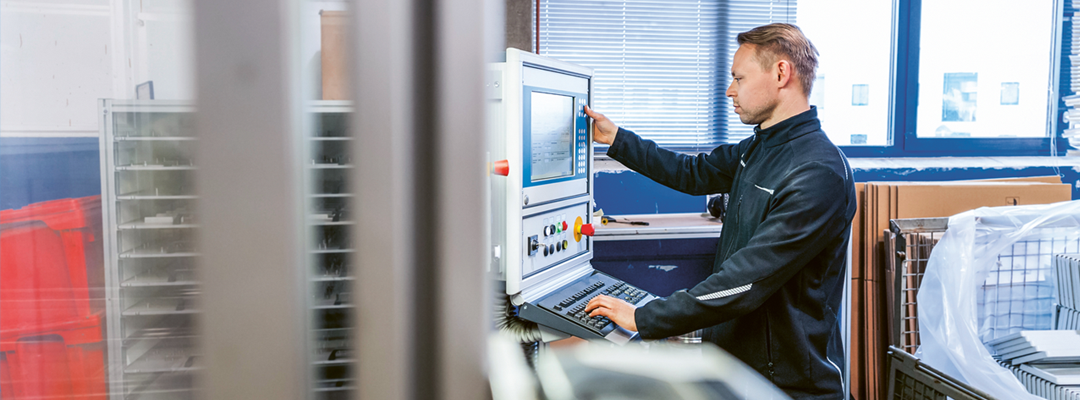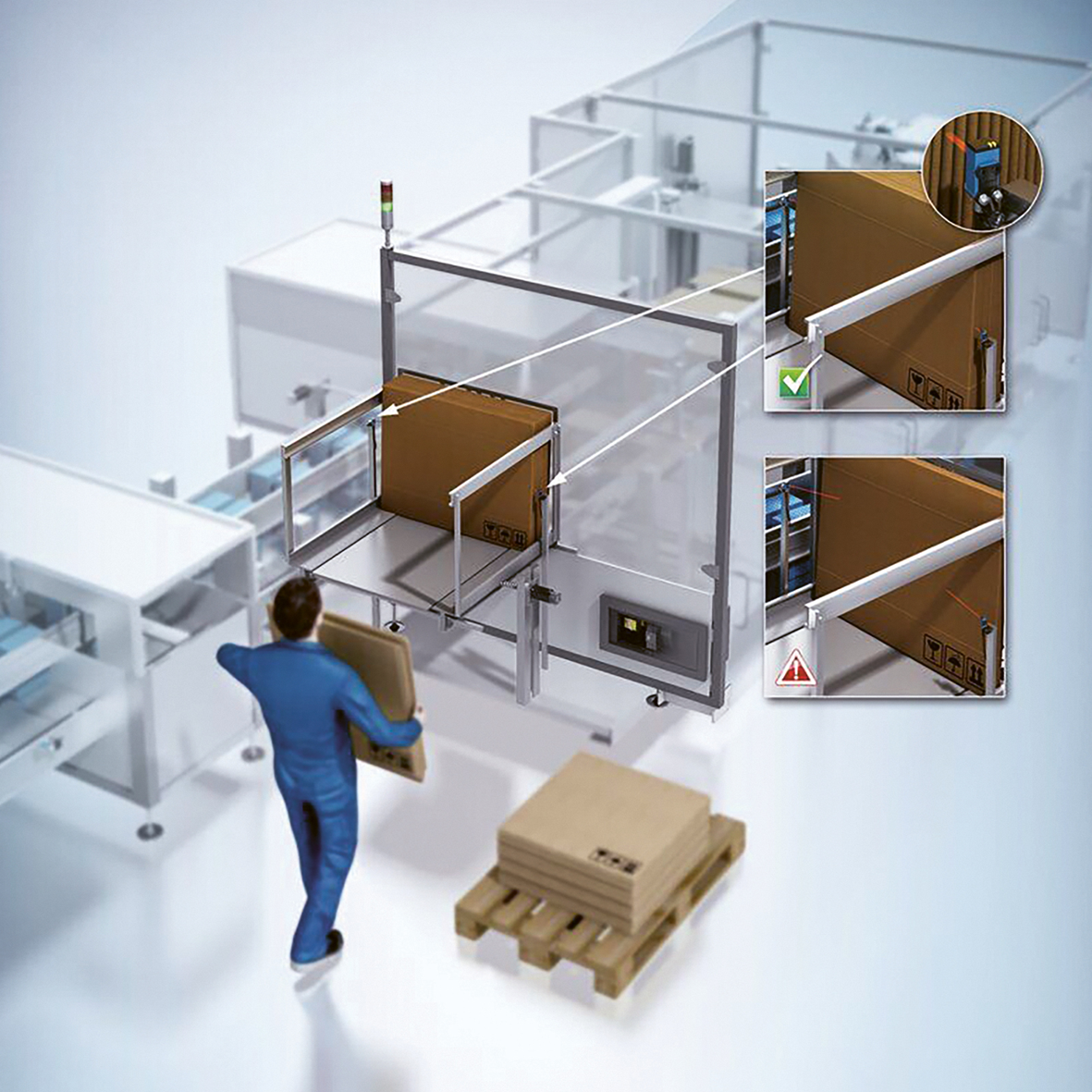
Annual Report 2020
FILLING LEVEL MONITORING

How filling level data improves interactions in production: A new digital solution especially for packaging machines enables the aggregation of sensor data beyond plants and production lines, and includes a notification service. This makes life easier for users in many ways.
Machine downtimes in production cost money and should therefore be avoided wherever possible. This also applies to packaging machines: Employees generally have to check the filling levels of cardboard, adhesives or foils themselves, and resupply machines in good time – which can be time-consuming and confusing in the case of a larger interlinked production line or a whole machine park.
A new solution from SICK provides assistance here: “Our sensors measure the filling levels of the packaging materials in the machines – a familiar application so far,” explains Alexander Wiestler, Head of Global Product Management.
“What’s special here is that we aggregate and constantly update the data, and enable them to be called up via a cloud service anytime and anywhere. Regardless of the machine producer, this preparation of the information – and the transparency it provides for users – ensures smooth production processes.”
Users obtain access via the Digital Service Catalog, where customers log in with their individual SICK ID so that they can use a variety of services. Filling level monitoring as a Digital Service offers employees in production considerable advantages in everyday use: Simple and comprehensible representation in a dashboard allows them to see the filling levels via any browser-enabled device anywhere – and receive messages as a machine reaches a critical level so that material can be refilled in good time, avoiding any downtimes. A smart watch also informs the machine operator about critical filling levels acoustically and with vibrations. Users can decide for themselves when a signal should be transmitted. For example, a first alarm at a filling level of 25 percent and a critical alarm at a level of just 10 percent. The values are, of course, freely configurable. “The application therefore makes life a lot easier for employees: It becomes simpler for them to plan and structure their work, and better enables them to reach their targets – such as a particular level of machine utilization during a shift,” explains Stephan Steneberg, Digital Solution Engineer at SICK.

The application, however, also provides new knowledge that can be used to optimize the production process: The solution visualizes the capacity utilization of production lines or even entire sites, and permits a variety of evaluations and comparisons – with whose help unused capacities can be displayed.
The solution, which can be used for all packaging machinery regardless of the producer, was implemented in late 2020 for a major customer in the food industry – customized to meet their needs precisely. In future, the customer will be able to individually expand and configure the system, and use it for other applications. “We can add individual functions and services for each customer,” says Stephan Steneberg. “It can also be integrated horizontally in systems from third-party suppliers, enabling greater functionality.”
This solution very nicely shows that the potentials of ‘classic’ sensor applications are by no means fully exploited. In combination with Digital Services, the two can complement each other perfectly: “The combination of the two makes it possible to detect conditions holistically and display them transparently. We thus enable our customers to obtain new knowledge based on familiar sensor data, to improve their productivity and simplify the lives of all involved in the process. Analysis of the sensor data, and the resultant gain in knowledge, are no longer just a task for the management. Sensor data can be prepared specifically for every role in a company, and thus generate a great deal of added value,” Alexander Wiestler sums up.







